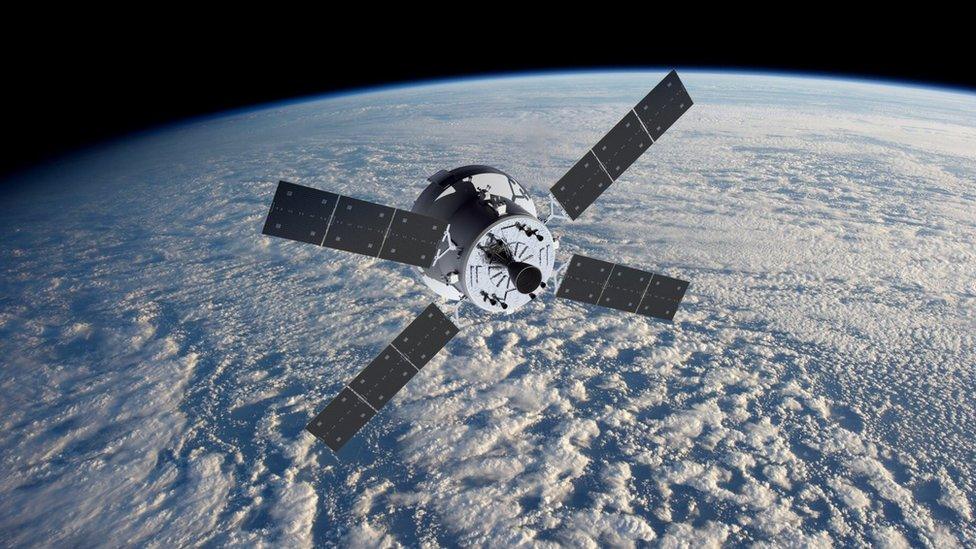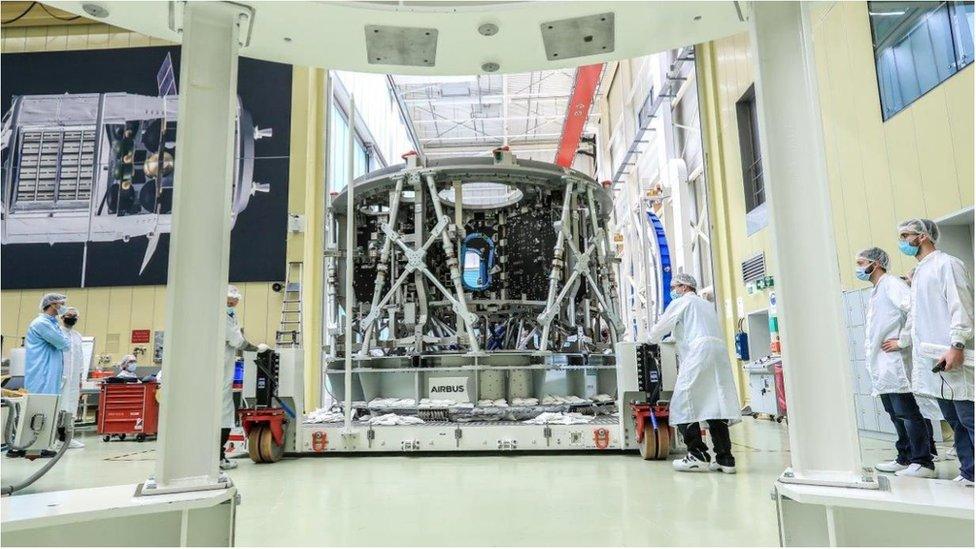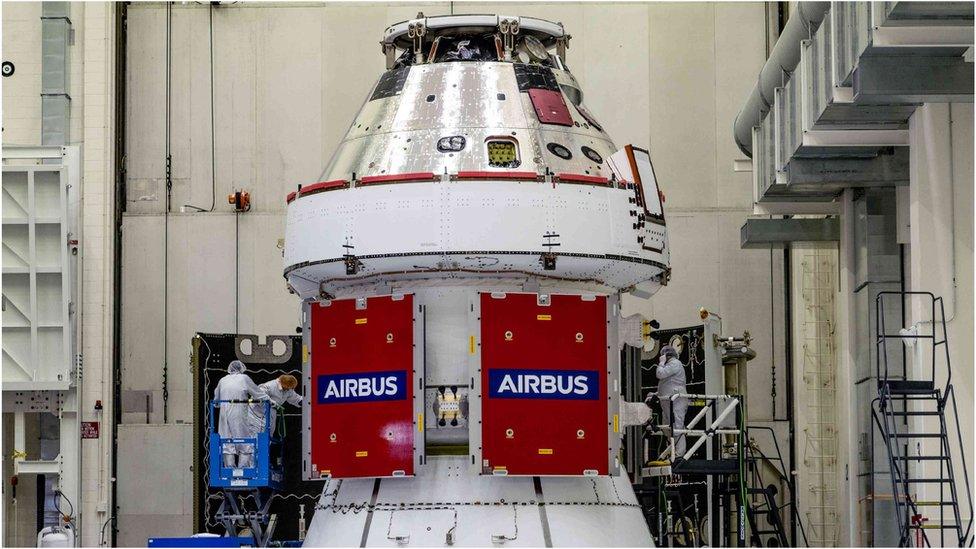Europe to make more hardware for American Moon missions
- Published

Artwork: The service module will push the Orion capsule through space
Europe will be building a further three service modules for the US space agency's (Nasa) Orion crew capsule.
The module is the "back end" of the American astronaut vehicle, and provides propulsion and electrical power, as well as life-supporting supplies of water and oxygen.
Europe had already committed to build three service modules.
Tuesday's contract between the European Space Agency (Esa) and Airbus takes the total number now to six.
All the European Service Modules (ESMs) will be used on Nasa's Artemis missions. Artemis is the follow-up to Apollo and will see astronauts once again walk on the surface of the Moon, as well as operating a station in lunar orbit called the Gateway.
The firm, fixed-price contract with aerospace manufacturer Airbus is worth in excess of €650m (£580m; $790m).

The European service modules are assembled in Bremen, Germany
Under the barter arrangement Esa has with Nasa, no cash crosses the Atlantic - only hardware contributions.
The ESMs, and the promise of European modules for the Gateway, go towards covering the costs of European astronaut and scientific access to the International Space Station and, in future, to the Artemis programme itself.
"We've secured three seats on Orion already through our participation in the Gateway. And if we can make further contributions to Artemis, this opens the door to European astronauts to get to the surface of the Moon," explained Dr David Parker, Esa's director of human and robotic Exploration.
ESMs are assembled in Bremen, Germany, before being shipped to the Kennedy Space Center in Florida to be integrated with the crew capsule. The combined vehicle is designed to launch on a big new rocket called the Space Launch System (SLS).
This, currently, is going through final testing, including a critical second "static fire" of its main core section and engines later this month. A first firing, undertaken in January, was aborted early when sensors detected "conservative" parameters being breached in the behaviour of the core's hydraulics systems.
If the next test passes without incident, it should clear the way for the SLS to launch before the end of the year on what's called the Artemis-1 mission. This will send an uncrewed version of Orion/ESM around the Moon.
Artemis-2 would repeat this, but with astronauts onboard. Artemis-3 is the key mission that would actually take humans back to the lunar surface.

The ESM for the Artemis-1 mission has already been joined to its Orion capsule
The first European service module is integrated with the Artemis-1 Orion and approaching the end of its preparation for flight. The second service module is about to leave Bremen for KSC. The third, for that all important Artemis-3 mission, has only recently begun outfitting in the German factory.
The newly contracted hardware will be used on Artemis missions 4, 5 and 6.
"The European service module is the first vehicle that Europe has built that was let on to the critical path to a major space objective by our international partners, by Nasa," said Esa astronaut Alexander Gerst, who hopes one day to walk on the Moon.
"They allowed us to contribute knowing that if we fail, the programme would fail. And that's a very, very big compliment. It means that Europe's space industry and space capabilities in the last decades have been shown to be trustworthy."
Nasa is currently going through a management change. Its top official will shortly be appointed by new American President Joe Biden. And as ever when there is a change in administration in the US, commentators speculate on how space projects such as Artemis, Orion and SLS might be affected.
But Dr Parker said he was confident there would be no interruption to what had already been agreed between Europe and the US.
"My feeling is that Artemis is very much a programme that is supported by both Houses [of Congress], and has tremendous industrial and scientific benefits that an incoming administration is going to look at very closely. And, of course, we have now signed committing international agreements with Nasa for our participation in the Artemis programme," he told BBC News.
